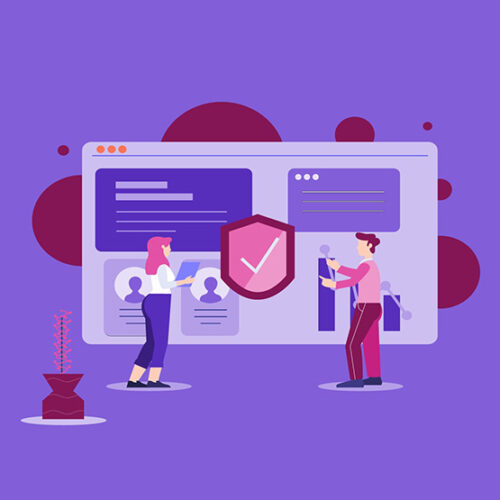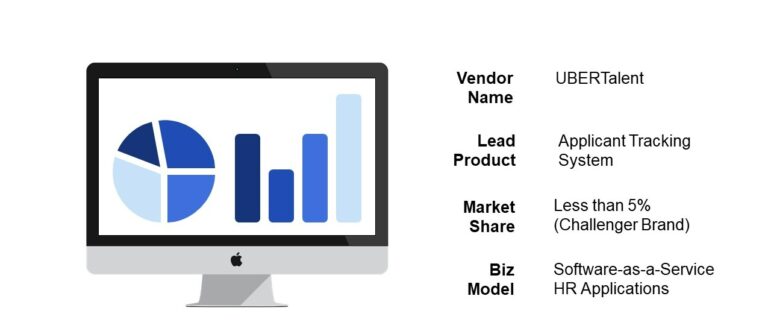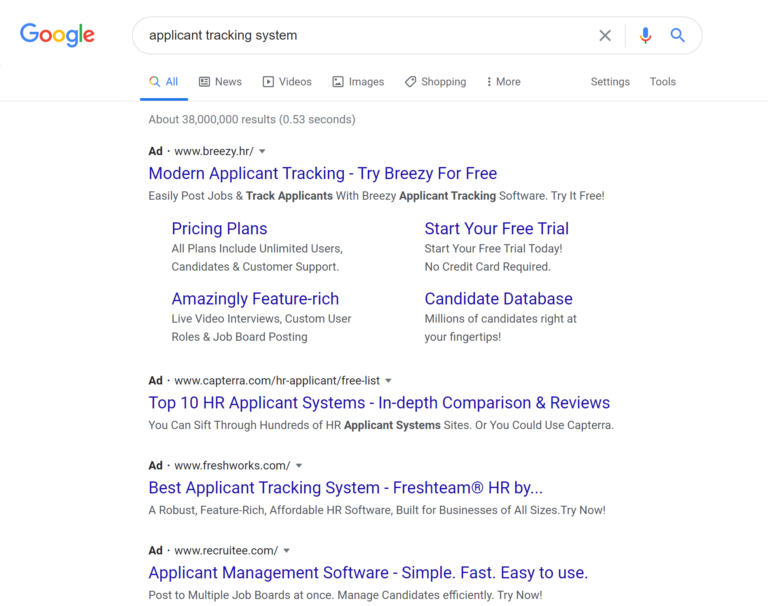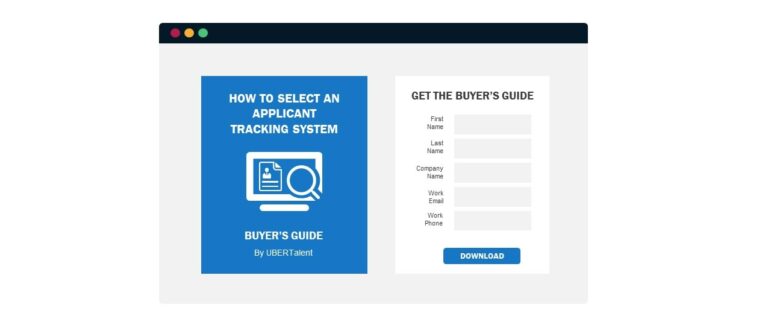An Introductory Guide
Demand generation, or what is sometimes called lead generation, refers to the processes that B2B marketing organizations use to identify potential buyers in the market and get them to engage in a sales process. Most CEOs and board members view demand generation as the most important function marketing performs, because it directly correlates to sales pipeline, new bookings, and top-line revenues.
There are lots of different strategies to generate demand ranging from digital programs such as digital advertising and search engine optimization to more traditional activities like direct mail and trade show exhibits. In this guide we will explain many of the popular demand gen techniques being used by B2B tech market teams as well as some of the common strategies such as inbound, outbound, and account based marketing.
What is B2B Demand Generation?
Most “demand generation” is focused on finding buyers in an active purchasing cycle.
“Demand generation” is a fancy term that marketers use to describe all the activities they do to generate leads. The phrase “demand generation” is aspirational in most cases. The word “generation” suggests that the marketing team is somehow convincing customers who were not planning to buy a technology solution that they need really one. Rarely does that actually happen in the real world.
In most cases, marketing is focused on identifying companies who already either are 1) in active purchasing cycle or 2) plan to start one in the near future.
A better phrase for the actual process used by marketing might be “prospective customer identification.” Of course, that doesn’t sound as cool as “demand generation” and we are talking about marketers here so cool always wins.
Demand Generation Strategies
Online buying behaviors have led to a shift in ownership from sales to marketing
Demand generation is a relatively new responsibility for marketing organizations. It wasn’t that long ago that sales representatives at software companies had to generate their own leads. With the advent of the web, more and more of the purchasing process is moving online. Buyers use search engines, online review sites, and social media to research technologies. Along with the shift in purchasing behaviors, marketers have developed a whole range of strategies that enable them to identify and engage buyers through digital channels. Examples include email marketing, webinars, content marketing, digital advertising, and search engine optimization.
Not all of the purchasing process occurs online. As a result, most demand generation teams still use traditional channels like tradeshows, direct mail, and cold calling to engage with prospects.
Examples of Demand Generation Strategies
The Goal of Demand Generation
Ideally, the goal is to get the customer to purchase a subscription online using a self-service model
All of these demand generation strategies and techniques have a common goal – to create to sell your product to prospective buyers. In any given market, during any given quarter, there are thousands of different companies planning to buy technology. Marketing’s job is to:
- Find the companies that are “in the market” for a purchase
- Pinpoint the specific individual(s) responsible for their decision
- Get them to consider your solution and engage in a sales process
- Purchase – The customer researches the product and purchases a subscription online in a self-service model.
- Trial Registration – The customer researches the product and signs up for a free trial in a self-service model.
- Demo Request – The customer researches the product and requests to see a live demonstration from a sales rep.
- Sales Inquiry – The customer researches the product and wants to speak with a sales rep to learn more.
But most require human interaction before purchasing so the more common goal is to schedule an intro meeting with sales.
- Content – Filling out a form on the website to download a white paper or eBook.
- Webinar – Registering to attend a webinar to learn more about a technology or best practices.
- Product Tour – Experience a self-guided, interactive demo of the key product features and use cases.
Only a small percentage of customers today, purchase online or purchase after a free trial. Most still require interaction with a human being to better understand product features, pricing models, integration capabilities, service levels, or contract terms. As a result, the most common goal of the demand generation team is to get the customer to agree to take a 30-minute meeting with a sales representative. At most SaaS and cloud providers this initial introductory meeting is considered “a lead.”
The B2B Buyer’s Journey
Finding leads requires an understanding of how businesses make purchases
How do marketing organizations find leads? That is where the hard work comes in for the demand generation teams. How do you know which companies might be in the market to buy a particular software application? To answer that question you need to understand “the buyer’s journey.” In other words – How do business buyers go about researching technologies, identifying products, and selecting a specific vendor?
Sample Technology Buyer’s Journey
The way businesses buy products is not all that different from the way you as a consumer make purchases. Think about the last major purchase you made. Have you bought a car or TV recently? What was the first thing you did? Talk to a salesperson at a car dealership? Go to a retail store like Best Buy and talk to the store employees? Probably not. You probably asked your friends and family on social media for recommendations. Or maybe you went online to read real-world reviews to understand the strengths and weaknesses of different products. Or you may have gone to several retailers websites to compare prices.
Just as consumers use the web to discover, evaluate, and compare purchases so do business buyers. In fact, studies show that most companies are able to gather 60-80% of the information they need to make a purchasing decision before they are willing to speak to a sales rep.
Online Price Discovery
Online price discovery accelerates the buying process
Online Reviews
Online reviews help buyers understand the pros and cons of each product
For most types of software, you can see online customer reviews as well. G2, Capterra, and TrustRadius are a few of the more popular B2B software review sites. Reading reviews help buyers quickly understand the strengths and weaknesses of each product from the perspective of real-world customers.
Online Reviews are Available for Most SaaS and Cloud Products

Online Research
Much of the buyer journey is self-guided without a sales rep
The ability of buyers to do 60-80% of their research online is a big problem for the sales teams at tech vendors. By the time the buyer speaks to a sales rep they will have already formed strong opinions about what options they have and which product they need.
More than 60% of the Buyer’s Journey is Self-Guided
Example – Vendor sales teams are not typically engaged in early phases
As a result, demand generation teams are often asked to try to pre-empt the online research process and find potential buyers earlier in their journey.
Real World Example
To make this all easier to understand let’s consider a fictitious example – a HR leader who needs to purchase Talent Acquisition Software an Applicant Tracking System (ATS) for their in-house recruiting program. An ATS is just a fancy name for HR software that captures job applications and manages candidates through the interviewing process.
The Buyer
Example of a buyer of HR Software
Mary Jobfairie is a Director of Recruiting at a $1B electric vehicle company named JigaWATT. Her company is growing quickly. In addition to partnering with a world-class search firm, she also needs to replace her existing Applicant Tracking Systems to manage the pipeline of candidates sourced by her in-house team. She currently uses an application from a company called JOBfilla. The vendor was acquired by MonstaTEK a few years ago. Since the acquisition, most of the top developers have left JOBfilla and it has not released many new features. HR managers complain that the software is complicated to use. For example, it takes 45 minutes to post a new job to her company’s website. It is time for Mary to upgrade to something better.
The Seller
Understanding the buyer’s journey is the key to identifying prospects
UBERTalent is a small, but fast-growing HR software vendor that offers an Applicant Tracking System. UBERTalent wants to reach buyers like Mary who are in the market for a new recruiting system. How can they identify that JigaWATT and Mary are prospective buyers of their technology and engage her as early in her buyer’s journey? To answer these questions, we need to understand how Mary researches the different options for Applicant Tracking Software.
Inbound Marketing
Search
Many buyers start their journey with search engines
One of the first things Mary will do is go to a search engine like Google. She will type in a phrase like “recruiting software” or “Applicant Tracking Systems,” or “HR system.”
Marketers refer to these popular, generic phrases typed into search engines as “keywords.” Mary might also phrase her search in the form of a question like “What is the best recruiting application?” or “What is an alternative to JOBfilla?” Marketers call these types of more specific queries as “long tail searches.”
Search Engine Query
Google will display a page listing various websites about Applicant Tracking Systems. Marketers call this the “Search Engine Results Page” or “SERP.”
Search Engine Marketing (aka Paid)
You can buy your way to the top of the search page
At the top of most Google SERPs are 3-4 different ads. Marketers at HR software vendors can bid with Google’s advertising platform to appear in the SERPs for different keywords. This discipline is referred to as “Search Engine Marketing (SEM)” or “paid search” in the marketing world.
Below the ads, Google will also display 8-10 different links to websites that its algorithm has determined are most relevant to Mary’s search. These non-paid links are called “organic search results.” Running ads on Google is a sure-fire way to appear at the top of the page, but marketers must pay a fee each time someone clicks on the link. Google runs what is called a “pay-per-click” model.
Paid Search Results
Search Engine Optimization (aka Organic)
Or you can earn your way to the top of the search page
Although most marketers do run Google ads, they would prefer to get their clicks from organic search results to avoid paying any advertising fees. There is a whole cottage industry of marketing agencies focused on helping customers rank prominently on Google search results to minimize ad spend. Marketers call this “Search Engine Optimization” or “SEO.”
Organic Search Results
Lead Conversion
The goal of most marketing strategies is to get buyers to self-identify
Let’s suppose Mary searches on “Applicant Tracking System” on Google then clicks on either an ad or an organic search result for a software vendor named UBERTalent. She is then routed to UBERTalent’s website onto what marketers call a “landing page.” The purpose of the landing page is to convince Mary to take the first step in the sales process, which typically involves filling out a form to “self-identify.”
Marketers experiment with lots of different creative approaches to get buyers like Mary to self-identify, but the four most popular approaches are:
- Free Trial – Some software vendors offer a free 14-day or 30-day trial of the product. Prospective customers can experience the product first-hand with access to a limited set of features.
- Demo – Almost every tech provider offers buyers an option to request a 30-minute demo of the product, which typically indicates intent to make a purchase.
- Consultation – Some will offer a free consultation with an expert who can help educate buyers like Mary on the different features and benefits of the software being considered.
- Content – Another popular option is to offer downloadable “content” that helps the buyer self-educate. Examples of content might include “Buyer’s Guide for Applicant Tracking Systems” or “10 Questions to Ask Before You Buy Recruiting Software.”
Example Landing Page with Content Download
All three of these strategies are designed to entice buyers like Mary to self-identify by filling out a form and revealing her contact information (name, email, phone). Once Mary fills out the form, her information is routed to UBERTalent’s “Marketing Automation Platform.” The most popular marketing automation systems are from companies like Hubspot, Adobe (Marketo), Oracle (Eloqua), and Salesforce.com (Pardot). These applications house the marketing database with all the names and contact information for potential buyers the marketing team wants to reach. Marketing automation systems also manage the “lead routing” process.
Free Trials and Product-Led Growth
The self-guided buying experience with a free trial is referred to as product-led growth (PLG)
Free trial is the preferred option of many technology vendors. Ideally, UBERTalent would like Mary to register for a 14-day free trial, fall in love with the product, and sign up for a paid subscription. In this scenario, Mary’s whole buyer journey was a self-guided experience. She never spoke to a sales representative or engaged with any human from UBERTalent. As a result, UBERTalent doesn’t incur much sales and marketing expense to acquire Mary as a new customer.
These types of free trial to paid customer journeys are becoming increasingly popular. SaaS and cloud providers refer to the self-guided experience as a “product-led growth” strategy. The product-led growth (PLG) model is more sophisticated than it might seem. We won’t cover PLG in detail this guide.
Although, vendors would prefer customers to engage in a self-guided buying process that converts into a paid subscription, that outcome only occurs in a small percentage of cases. Most free trials do not convert into a paying customer at the end of the trial period. As a result, there is still a need for marketing engagement and a formal sales process to attempt to win the customer’s business.
For purposes of this guide, let’s assume that Mary did not sign up for a free trial, but elected to request a demo or download a content asset instead.
Content Marketing
Content marketing is a strategy to get buyers to indicate which topics they are most interested in
Marketing departments build out libraries of content in a variety of different formats and lengths to appeal to different audiences. The idea behind content marketing is to get buyers to self-identify and indicate that they are interested in a particular topic. If Mary downloads an eBook on UBERTalent’s website about “How to Recruit Differently with Gen Z,” that indicates that she is interested in learning more about how to attract more twenty-somethings to apply for jobs. It may also indicate that her existing software application is not well suited to that task. Suppose Mary opens an email and clicks to watch a video from UBERTalent’s CEO explaining how the company is using artificial intelligence to revolutionize recruiting. Her interest in the video may indicate that she has an interest in learning about modernizing her HR applications and is open to switching vendors.
eBooks, blogs, and white papers are the most common content formats, but video and podcasts are growing quickly in popularity
Historically, white papers have been one of the most popular content formats. A white paper is typically a text-heavy document with 8-10 pages of in-depth education and perspective on a technical topic. eBooks have emerged as a popular alternative to white papers. eBooks are designed to be easier to read featuring lots of infographics and eye-popping visuals with shorter bursts of text.
Examples of Popular Content Marketing Formats
Not every buyer will commit 30 minutes to reading an eBook or white paper so shorter form content like blog posts and articles are a must-have for the content library as well. Content is increasingly being developed in formats other than text. For example, podcasts and videos are the fastest growing content formats. Just like many people would prefer to watch TV or listen to the radio rather than read a book, many buyers prefer podcasts and videos to reading a 10-page white paper.
Business Development Representatives
Business Development Reps follow up on most inbound leads
When a buyer like Mary fills out a form (e.g. demo request, free trial, content download), her details are run through a “lead scoring” process to determine the next best action. Leads that have the highest likelihood of making a purchase in the near future are usually given the highest score and routed to someone in the sales organization. For example, a demo request submitted through the website would typically be given a high score and routed for immediate follow up. Conversely, an eBook download might be given a low score and not acted upon until the buyer engages further.
Specialized Roles in Software Sales Teams
B2B Sales teams are highly specialized with AEs managing deals and BDRs sourcing leads
In most B2B technology companies the sales team is highly specialized with multiple different groups performing different tasks. There is typically a business development team responsible for generating leads at the front-end of a sales cycle. Each of the leads are handed over to another type of sales representative called an account executive (AE). The AE manages the relationship with the customer throughout the sales cycle, facilitating meetings, presenting pricing, and negotiating contract terms. If the AE is successful, s/he will close the deal and the newly paying customer will be handed off to another team called customer success. As the name implies, the customer success team’s role is to help the buyer achieve the desired outcomes and value from the solution.
BDRs Hand Off Leads to Account Executives
Let’s turn our attention back to Mary and the form she filled out. In most cases, her contact details will be routed to the business development team. A “Business Development Representative (BDR)” will be responsible for following up and get a conversation with her.
BDRs go by many alternate names. You might hear marketers referring to Sales Development Reps (SDRs), Account Development Reps (ADRs), and Lead Development Reps (LDRs). All of these roles perform a similar set of activities – regardless of what name they are called.
The goal of the BDR in this case is to get in touch with Mary and better understand her current situation. Why did she sign up for a free trial or download a white paper? Is she in an active purchasing cycle? Is she experiencing some level of pain with her current approach? Or is she just curious about how the technology works?
The BDR will perform some level of “qualification” of Mary as a potential buyer. If she demonstrates some level of need or urgency, then the BDR will schedule an introductory conversation with an account executive. If the initial call goes well the lead will be converted into an opportunity, assigned a potential dollar value, and tracked in the sales pipeline.
Inbound Leads
Buyers follow different paths in their purchasing journey, necessitating different marketing approaches
Buyers like Mary who find a tech vendor’s website on their own and engage in a free trial or content download are called “inbound leads.” The marketing programs designed to help buyers find you online such as SEO/SEM are referred to as “inbound marketing.”
Not all buyers will conduct research on a tech vendor’s website as Mary did. Other buyers may perform offline research, consulting with trusted advisors and peers in the industry to identify which ATS vendors to consider. And some buyers will conduct research online, but in stealth mode. They will avoid filling out forms on vendor websites until they are ready to engage in a sales discussion.
Life would be simple if all buyers followed the same journey. If everyone used a search engine, marketing teams could focus on just inbound marketing techniques. Because buyers follow different journeys, tech vendors must use different marketing motions to engage them.
Outbound Marketing
Outbound marketing is when you find the buyers
A second popular marketing strategy is called “outbound marketing.” In contrast to inbound marketing where buyers find the vendor, with outbound marketing the vendors find the buyer.
The most popular strategy for outbound marketing is outbound prospecting with a BDR team. Although, we introduced the role of the BDR above as being responsible for following up on inbound leads, the biggest value add of business development teams comes from outbound prospecting. BDR teams are tasked with finding the potential buyers that are in the market to purchase technology, but were not identified through the inbound marketing programs of the demand generation team.
BDRs start by developing a list of the accounts that are most likely to be in the market for their solution. Sales intelligence tools such as ZoomInfo, Cognism or LinkedIn Sales Navigator to identify companies that match the characteristics of their ideal customer profile. The BDRs then reach out to them via a carefully choreographed series of cold calls, email messages, and LinkedIn interactions.
Inbound versus Outbound Marketing
Outbound Prospecting
Outbound is inefficient because you don’t know who is in buying mode
The challenge with outbound marketing is that marketers don’t know all the companies that are considering a purchase in the next few months. Let’s suppose Mary did not click on UBERTalent’s website links on the Google SERP, but instead clicked on one of their competitor’s sites. How would UBERTalent’s marketing team know that Mary is a potential buyer in the market for their type of software? Unless she had engaged with one of UBERTalent’s other marketing channels they probably would not.
Outbound marketing requires casting a wide net by reaching out to a large number of companies hoping to catch some who are in the market for their technology. Outbound marketing is inherently inefficient, because you are going to reach out to many businesses who have no current interest in the product you are selling. For example, an inside sales rep may have to call 100 different companies just to get one response and conversation. Finding an interested buyer is about being in the right place at the right time. Most marketers prefer to generate leads using inbound strategies, because it is more economical. However, it is challenging to attract enough leads to fill your sales team’s pipeline using just inbound marketing. So most companies will use a combination of both approaches.
Outbound Marketing can be Inefficient
Example – Only 1 of the 8 Companies targeted is “in the market” for New Technology
Email Marketing
Email marketing is another strategy to identify buyers in purchasing mode
Cold calling via inside sales teams is one approach to outbound marketing, but there are many others. Email marketing is another popular option. Marketing teams will send out regular emails to a large database of prospective buyers inviting them to attend a webinar or download a white paper. For example, UBERTalent might send Mary and her teammates an email once a month inviting her to attend a webinar on a topic related to recruiting. If Mary opens the email and registers for the webinar, her name will be routed to the marketing database as a lead, which will be scored, and then routed to an inside sales team for follow up. The process is very similar to the inbound marketing lead flow described above. With email marketing, technology vendors are trying to get buyers to “put their hand up” and indicated that they are interested in one of the topics listed in the email. The marketing team then knows which potential buyers are in the market to learn more about which topics.
Email Marketing is a Popular Outbound Strategy
Account Based Marketing
In recent years, both inbound and outbound marketing have undergone criticism for not being targeted enough. Sales leaders often complain that they don’t want leads with just any company that is willing to talk to them. They want leads from the companies that will sign the biggest deals and that they have the highest probability of winning. Sales teams refer to these accounts as their “ideal customer profile.” The ideal customer profile is typically defined by “firmographic” criteria such as the
Firmographics are like demographics but for businesses
- Annual revenues
- Number of employees
- Headquarters geographic location
- Growth rate
- Vertical industry
- Ownership model (public/private/non-profit)
- Stock ticker symbol (public companies)
- Private equity or venture capital investors (private companies)
The ideal customer profile describes accounts with the best fit
Inbound leads often do not match the ideal customer profile
The inbound leads from people who discovered UBERTalent via a Google search may or may not fit the ideal customer profile. For example, a small business with only 200 employees may click on a Google ad to go to their website. However, such a small company may not need the advanced features of UBERTalent and may not be able to afford the price point of the subscription. A similar phenomenon may occur with the customers who register for a webinar that UBERTalent emailed them about. Typically, marketers will blast out webinar invitations to as broad of an audience as possible hoping to drive the maximum number of registrations. However, not all the targets who are emailed fit the ideal customer profile.
With traditional inbound and outbound marketing all leads are considered equal. For that matter, all accounts are considered equal in terms of priority. As a result, the inside sales team might focus its efforts on booking appointments with buyers for whom they can easily get meetings with rather than those who might spend the most. Mary’s company, JigaWATT, which fits the ideal customer profile, may never get a call because the inside sales team doesn’t have the name or contact details of any decision makers there and doesn’t want to take the time to do the research.
ABM focuses marketing on the highest growth areas
To ensure that marketing efforts are focused on the companies with the highest potential revenue, the industry invented the concept of “Account Based Marketing” or “ABM.” The idea behind ABM is to concentrate marketing efforts on a targeted list of high potential accounts rather than the broader market. For example, instead of the marketing team spending budget on Google Ads that anyone might click on, the funds might be directed at only the top 10 decision makers in JigaWATT’s HR department via targeted LinkedIn Ads. Instead of sending out a generic email to 10,000 recruiting professionals with a link to a white paper, an ABM program might involve sending a highly personalized article to 10 priority accounts with specific details on how JigaWATT can achieve their diversity and inclusion goals.
Summary of Demand Generation Approaches
There are many different approaches for generating leads
- Inbound Marketing (buyers find you)
- Outbound (you find buyers)
- Account-based marketing (you find the best potential buyers)
We also introduced several of the popular approaches for identifying and engaging buyers including:
- Search Engine Marketing (paid search)
- Search Engine Optimization (organic)
- Content Marketing
- Business Development Representatives
- Email Marketing
- Webinars
But these are not the only approaches. There are additional digital strategies including retargeting, video ads, contextual ads, online gifting. And the traditional, offline channels such as tradeshows and direct mail can be effective as well.
The effectiveness of demand gen programs is critically linked to brand awareness
How Brand Awareness Impacts Demand Generation
The response rate to all of these types of marketing campaigns is highly influenced by what the customer you are targeting thinks about you. Suppose you are targeting Mary with emails, webinars, cold calls, search ads, and direct mail packages. Mary’s likelihood to respond will be driven by her opinion of UBERTalent. If she has never heard of UBERTalent she might be intrigued to learn more about them. Or she might get annoyed and simply ignore the marketing programs. If Mary has a positive opinion about UBERTalent, she will be more likely to respond to the marketing programs. This is where the concept of brand comes in.
Latest Demand Generation insight

The 10 Steps in a SaaS Free Trial

Is Google is Killing Organic Search?





















